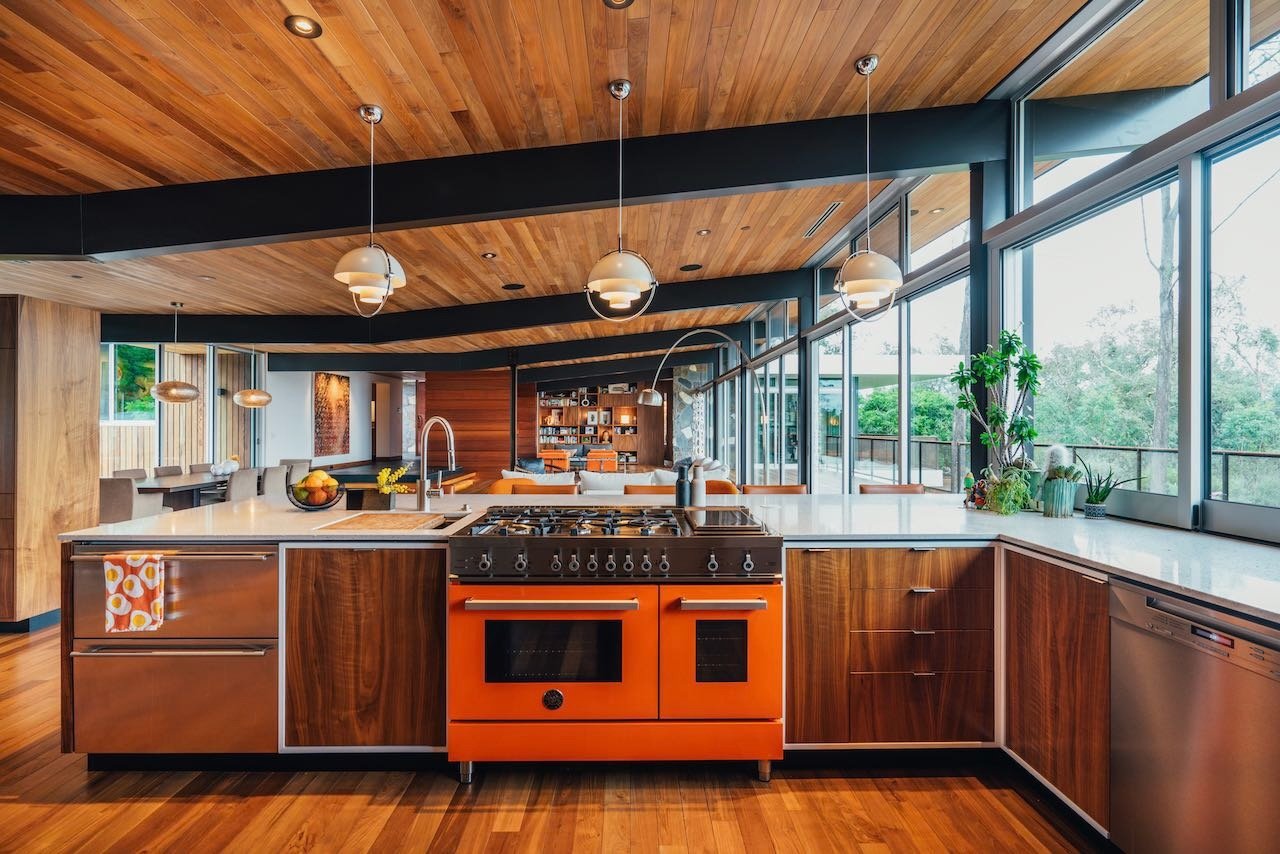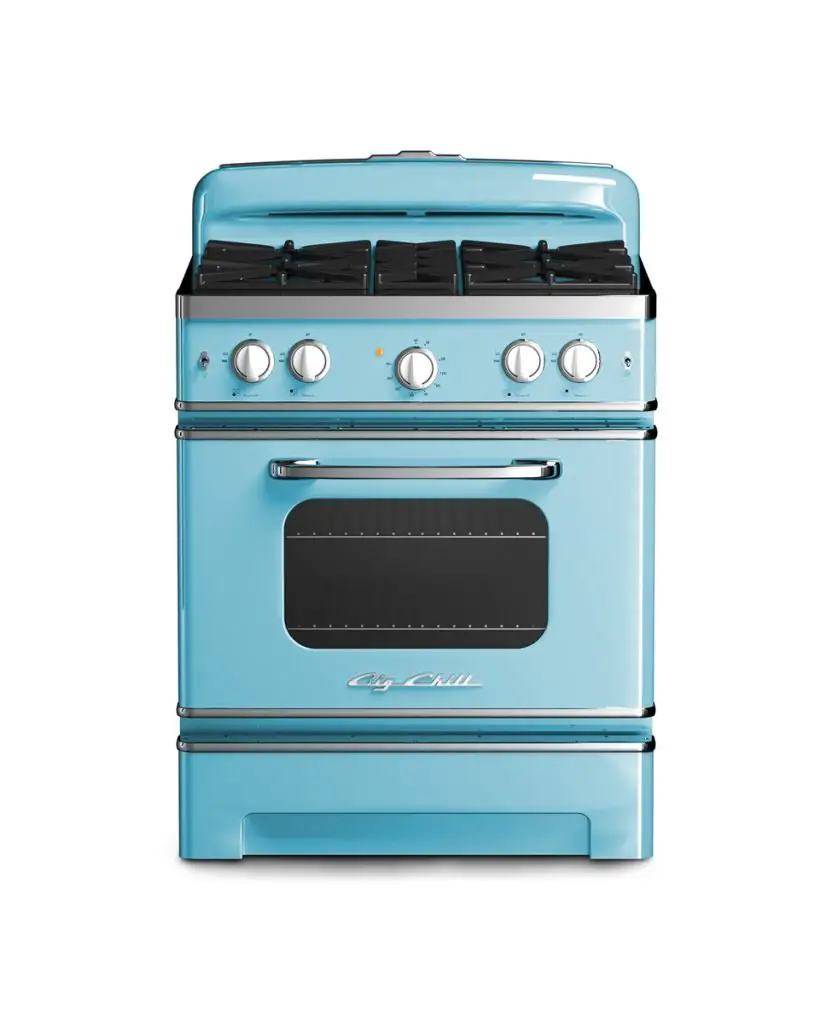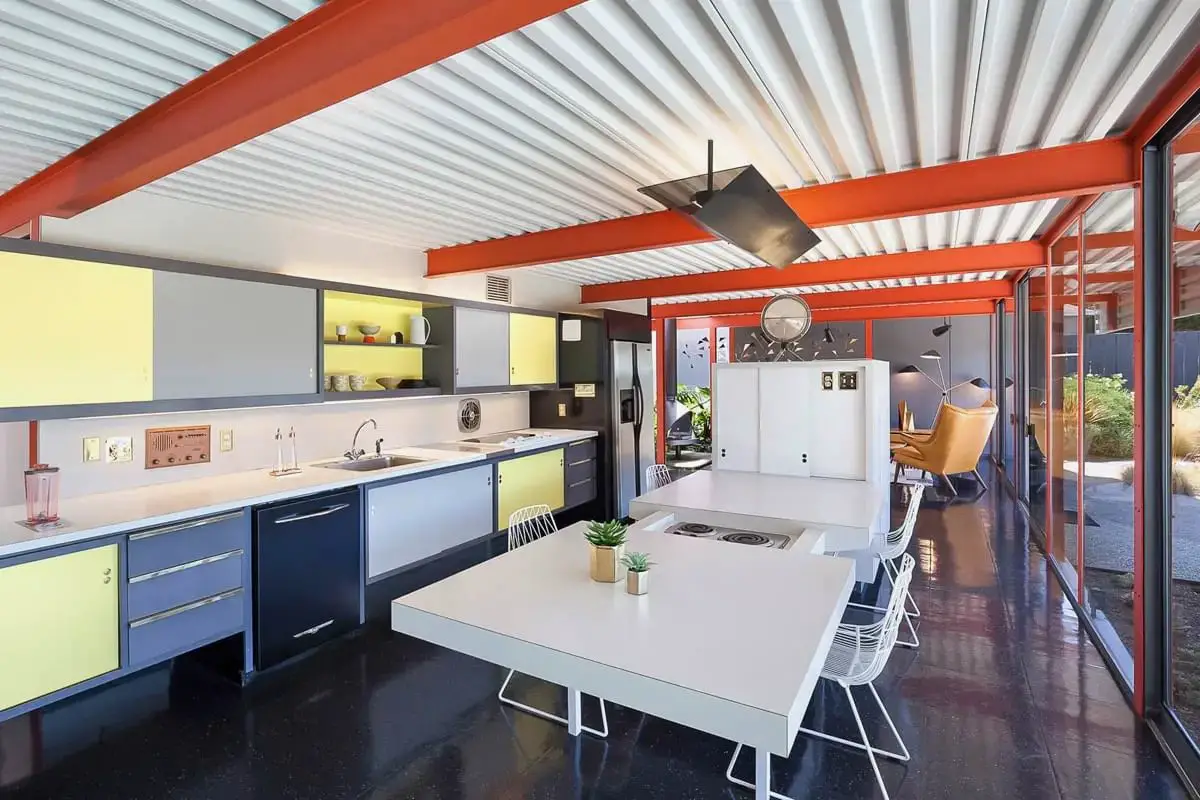
Just like choosing the right mid-century kitchen countertop or faucet, picking the perfect mid-century gas stove can be both exciting and a bit overwhelming. Whether you’re going for an authentic vintage vibe or a retro-inspired remodel, we hope this guide will help you navigate the process and find the perfect fit!
What Makes Mid-Century Gas Stoves So Special?
Mid-century stoves are more than just appliances, they reflect the innovation and optimism of their era. Designed at a time when kitchens were evolving into the heart of the home, these appliances were created to be both practical and visually striking. They embodied the growing emphasis on convenience and modern living, capturing the spirit of progress that defined the mid-20th century.
As suburban neighborhoods expanded and kitchens became gathering spaces, gas stoves emerged as both functional necessities and aesthetic focal points. Advertisements of the time often showcased these appliances as symbols of advancement, tying them to the era’s sense of hope and prosperity. To own a mid-century gas stove was to embrace a lifestyle that valued efficiency, style, and innovation.
Durability was a hallmark of mid-century gas stoves. Built with heavy-duty materials like cast iron, stainless steel, and enamel, these appliances were designed to withstand decades of use. Unlike many modern stoves that rely heavily on lightweight materials and electronic components, mid-century models were mechanically simple and robust, making them easier to maintain and repair. This craftsmanship not only gave the stoves a solid, reliable feel but also ensured they could remain functional for generations.
The design of mid-century gas stoves is unmistakable. With their rounded edges, chrome finishes, and bold color options like pastel pink, turquoise, and avocado green, these appliances were as much a statement piece as they were a kitchen tool. Many stoves incorporated design elements inspired by the automotive and space-age trends of the time, featuring dashboard-style control panels and sleek, streamlined silhouettes. Their aesthetic appeal added character to kitchens and made them an integral part of the home’s overall design.
While their visual appeal is undeniable, their features were equally impressive. Even in the 1940s and 1950s, manufacturers were finding ways to make cooking more efficient and enjoyable. Many stoves came with built-in griddles, double ovens, and warming drawers, offering a level of versatility that suited the needs of busy households. Innovations such as automatic ignition and adjustable flame controls gave cooks greater precision, while high-end models often included timers and temperature regulators—cutting-edge conveniences at the time.
What to Look For in a Mid-Century Gas Stove
Start by considering its authentic design. Look for details like rounded edges, chrome accents, and retro color options to capture the era’s vibe. If you prefer a modern approach with vintage charm, opt for a model inspired by mid-century aesthetics. Next, ensure the size of the stove fits your kitchen layout. Measure the height, width, and depth of the space to avoid any surprises during installation.
Think about the fuel type as well—most mid-century stoves run on gas, but some include electric ovens or dual-fuel options. Be sure to check your kitchen’s current setup for compatibility. If you’re buying a vintage model, evaluate its condition carefully.
Look for signs of rust, chipped enamel, or missing parts, as restoration can be expensive and time-consuming. Finally, keep safety features in mind. Many older stoves lack modern upgrades like automatic shut-off mechanisms, so plan to invest in necessary modifications for safe operation.
Vintage vs. Modern Reproductions
If you’re a purist, vintage mid-century stoves are undoubtedly the way to go. They are rich in character, showcasing the design and craftsmanship of the era. They bring a sense of authenticity to your kitchen, making it feel like a true mid-century time capsule.
The details—like chrome accents, enamel finishes, and period-specific knobs—add a unique charm that’s hard to replicate with modern reproductions. For those who value the connection to history, owning a vintage stove can be incredibly rewarding.
Another plus of vintage stoves is their superior build quality compared to many modern appliances. Vintage stoves were often constructed with heavy-duty materials like cast iron, stainless steel, and high-quality porcelain enamel. These materials not only give the stoves a solid, sturdy feel but also contribute to their remarkable longevity. In contrast, many modern stoves rely on lightweight materials and electronic components that, while more energy-efficient, may not have the same durability or lifespan.
The structural design of vintage stoves also differs significantly from their modern counterparts. Older stoves were built with simplicity in mind, using mechanical components that are often easier to repair or replace. This straightforward design contrasts with modern stoves, which incorporate complex electronics and digital interfaces that can be costly and time-consuming to fix when they malfunction. For those who prefer an appliance they can tinker with or restore themselves, vintage stoves are a practical choice.
However, mid-century vintage stoves come with their share of challenges. Many were built before modern safety standards were introduced, meaning they may lack features like automatic shut-off or flame-failure devices, which are now standard on newer models.
This can make them less safe to operate without modifications. Additionally, sourcing replacement parts can be difficult, especially for rare models or brands that are no longer in production. Finding a knowledgeable repair specialist might also be a challenge, as these stoves require expertise that isn’t common among modern appliance technicians.
Despite these hurdles, for those willing to invest time and resources into restoration and maintenance, vintage stoves offer unmatched charm, durability, and a connection to the past. They can serve as both a functional cooking appliance and a centerpiece in a retro-inspired kitchen, blending timeless design with everyday practicality.

Where to Find Your ‘New’ Mid-Century Stove
If you’re ready to explore, we’ve shortlisted a few places to help you start your research. When it comes to modern reproductions, brands like Elmira Stove Works and Big Chill offer stoves that look vintage but are easy to use and maintain.
For vintage stoves, instead, you can start your research from the below ones:
West/South-West
Buckeye Appliance — Stockton, CA
Carolina’s Antique Appliances — East Los Angeles, CA
RMR Company — San Diego, CA
Macy’s Classic Stoveworks — Houston, TX
East
Belgrove Appliance — Westchester County, NY
Antique Stove Hospital — Little Compton, RI
Chambers Rescue — Montclair, NJ
More Things To Consider
Installation and Maintenance
Getting your stove up and running is just as important as choosing the right one. Here’s what you need to know:
Professional Installation: Have a licensed technician install your stove, especially if you’re working with gas. They’ll make sure it’s properly connected and meets safety codes.
Regular Maintenance: Keep your stove in top shape by cleaning burners, checking for leaks, and inspecting connections. A yearly tune-up by a professional is a good idea.
Tools You’ll Need
Installing a stove isn’t a job to take lightly, especially with gas involved. Here’s a list of tools you or your installer will need:
Adjustable Wrench: Versatile for various nut and bolt sizes, allowing you to secure connections properly.
Pipe Wrench: For securing the gas line.
Gas Leak Detector: A handheld detector or soapy water to check for leaks.
Level: To ensure the stove sits evenly, which is crucial for proper cooking.
Phillips and Flathead Screwdrivers: Necessary for assembling faucet components and securing mounting hardware.
Teflon Tape: For sealing gas line threads to prevent leaks.
Voltage Tester: If your stove has an electric ignition or oven, you’ll need this to check connections.
Drill: For securing anti-tip brackets, which are required for safety.
Measuring Tape: To ensure proper alignment with countertops and cabinets.
